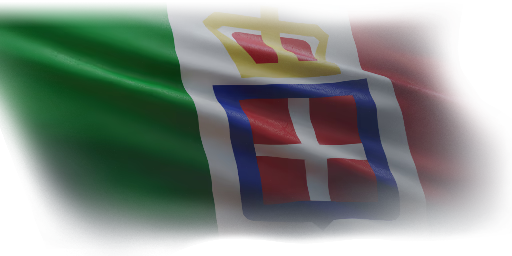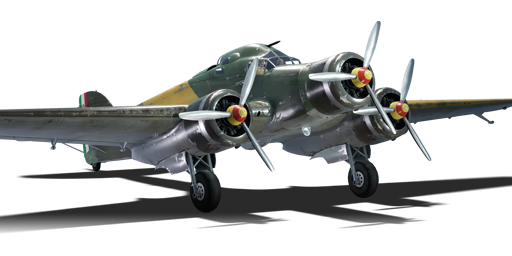




The S.M.79 serie 1 is an Italian bomber. It was introduced in Update 1.69 "Regia Aeronautica", though a variant existed in the Germany aircraft tech tree prior to the update.
Due to its relatively low Battle Rating, the three-engined S.M.79 serie 1 enjoys a relatively high speed for a bomber against most of the lower tiered opposition it faces. This aids its survivability, particularly in a shallow dive. Unfortunately, it is rather lacking in bombload options compared to the He 111s and Ju 88s and also has rather poor defensive fire arcs.
Unlike the German bombers, however, it is armed with 12.7 mm Breda-SAFAT machine guns which can pack quite a punch against the flimsier aircraft it faces. The pilot also controls a fixed forward-firing 12.7 mm Breda, which is otherwise uncovered by any defensive armament. This gun can be useful for strafing light vehicles and trucks that will be encountered frequently in low tier battles and can be used to shoot down other aircraft. It is somewhat more manoeuvrable than the He 111 H-3, but the Sparviero is by no means a fighter and will rapidly lose energy in turns. With the ability to carry 500 kg bombs, the S.M.79 can use these to more easily take out pillboxes and heavier tanks, although this reduces the total bombload to only 1,000 kg as opposed to 1,250 kg with 250 kg bombs.
flaps
flaps
flaps
brake
| Belt | Belt filling | Armor penetration (mm) at a distance: | |||||
|---|---|---|---|---|---|---|---|
| 10 m | 100 m | 500 m | 1000 m | 1500 m | 2000 m | ||
| T/Ball/Ball/I/AP | 21 | 19 | 12 | 7 | 4 | 2 | |
| AP/AP-I/HEF/API-T/I | 21 | 19 | 12 | 7 | 4 | 3 | |
| API-T/AP-I/HEF | 21 | 19 | 12 | 7 | 4 | 3 | |
| API-T | 21 | 19 | 12 | 7 | 4 | 3 | |
| AP-I/AP-I/HEF/HEF | 20 | 18 | 11 | 6 | 4 | 2 | |
| Belt | Belt filling | Armor penetration (mm) at a distance: | |||||
|---|---|---|---|---|---|---|---|
| 10 m | 100 m | 500 m | 1000 m | 1500 m | 2000 m | ||
| T/Ball/AP/AP/HEF | 21 | 19 | 12 | 7 | 4 | 2 | |
| AP/AP/AP/API-T | 21 | 19 | 12 | 7 | 4 | 3 | |
| API-T/AP-I | 21 | 19 | 12 | 7 | 4 | 3 | |
| Belt | Belt filling | Armor penetration (mm) at a distance: | |||||
|---|---|---|---|---|---|---|---|
| 10 m | 100 m | 500 m | 1000 m | 1500 m | 2000 m | ||
| T/Ball/Ball/Ball/AP | 13 | 12 | 7 | 3 | 2 | 0 | |
| T/AP/AP/AP | 13 | 12 | 7 | 3 | 2 | 0 | |
| T/AP-I/AP-I/AP-I | 13 | 12 | 7 | 3 | 2 | 0 | |












Flight performance | |
|---|---|
Survivability |
|---|
Weaponry | ||
|---|---|---|